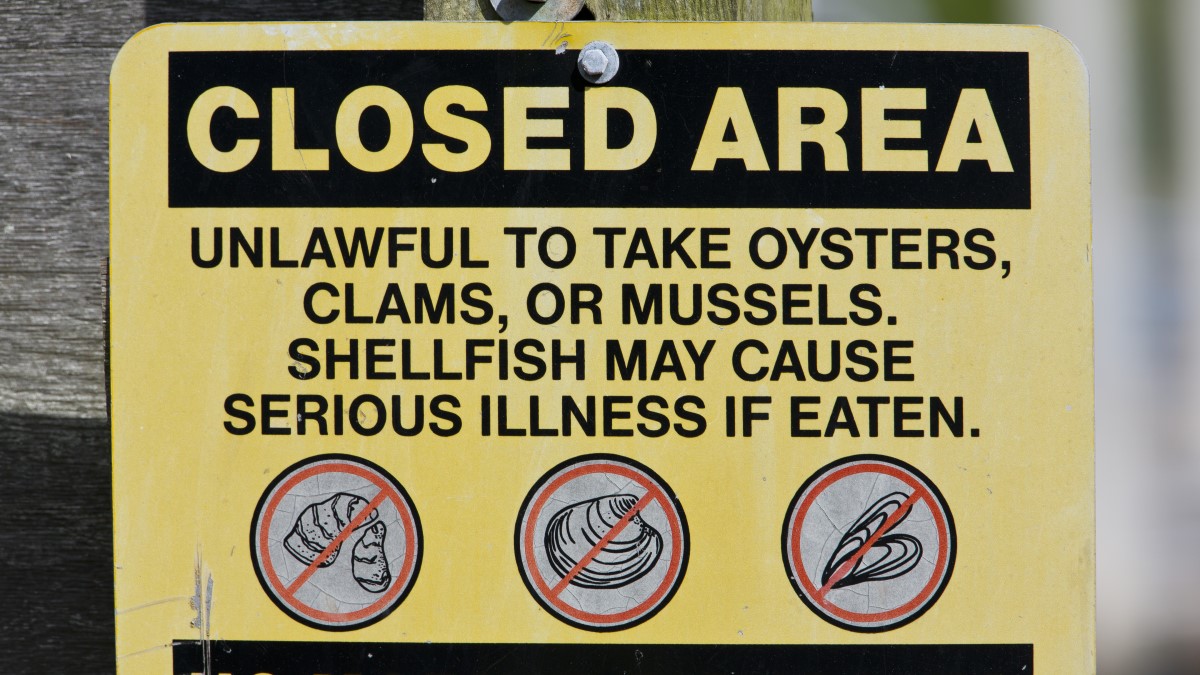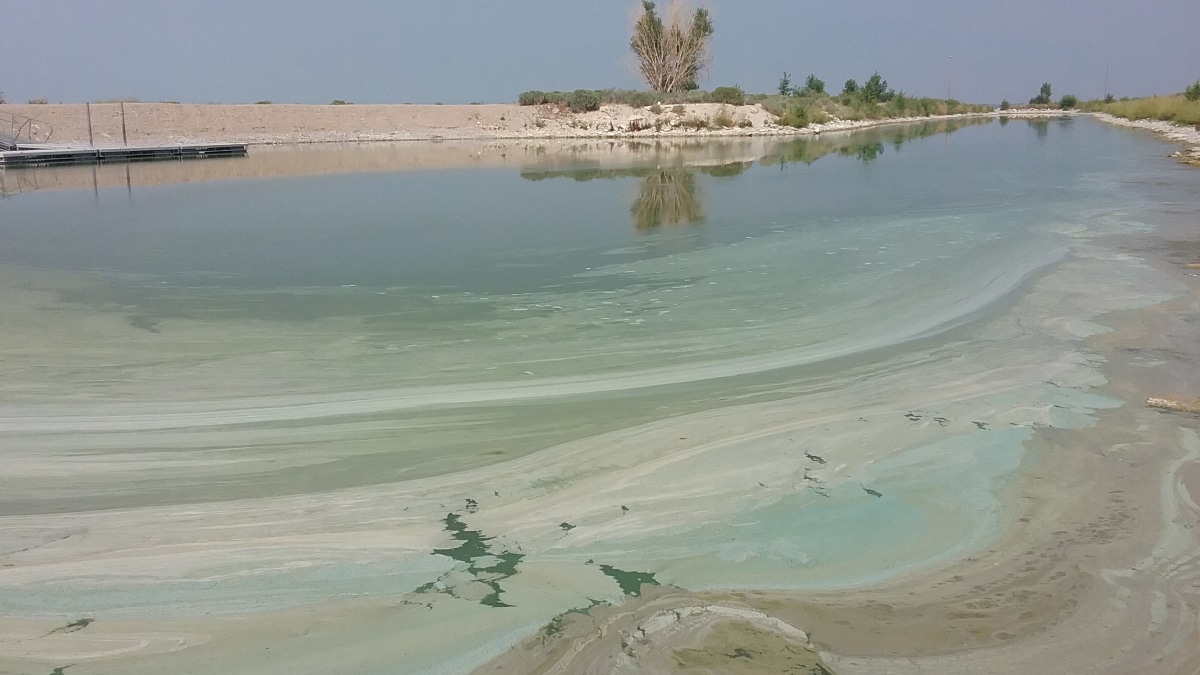Key points
- People and animals can get sick by touching, breathing in, or swallowing water with a harmful algal bloom.
- Eating contaminated food can also make you and your animals sick.
- Protect yourself, pets, and livestock by following advisories from local officials and staying out of water that looks or smells bad.

What causes it
Harmful algal blooms are caused by certain types of algae and cyanobacteria (also called blue-green algae). Harmful algal blooms, and the toxins they make, can cause mild to life-threatening symptoms in people and animals.
Harmful algal blooms grow in lakes, oceans, and other bodies of water around the world.
Exposure
Skin contact
Touching water with a harmful algal bloom can cause rashes or other skin irritation. You or your animals might have skin contact by swimming, wading, or doing other activities in the water.
Breathing in water droplets
People and animals can breathe in tiny water droplets, mist, or sea spray from a body of water with a harmful algal bloom. You can breathe in toxins from the water even if you do not go into the water. This could happen while you are on a boat or the beach, for example.
Breathing in toxins can cause symptoms like coughing or a sore throat. More research is needed to better understand the effects of breathing in toxins over a long period of time.
Swallowing water
Swallowing water with a harmful algal bloom can cause symptoms like stomach pain or vomiting. Symptoms can be serious, especially for animals.
Swimming and other water activities
You might accidently swallow water while swimming, water skiing, or doing other activities in water. Animals can swallow the water by drinking, swimming, or playing in water with a harmful algal bloom.

Utah Department of Environmental Quality
Drinking contaminated tap water
Less commonly, people and pets get sick from drinking tap water contaminated with harmful algal bloom toxins. This can happen when harmful algal blooms of cyanobacteria grow in reservoirs or other water bodies that supply tap water. Whether there are toxins in the tap water depends on:
- The level of toxins in the water source
- How well the water treatment methods a utility uses remove toxins
Contact your drinking water utility or health department for more information about harmful algal blooms and your tap water supply.
Eating contaminated food
Shellfish get contaminated with harmful algal bloom toxins when they filter toxins from contaminated water. Fish build up toxins by eating toxic algae or other animals that already have toxins in their bodies. People and animals can get sick when they eat these shellfish or fish.
Saltwater fish and shellfish
Eating shellfish or reef fish contaminated with harmful algal bloom toxins can cause symptoms like vomiting or diarrhea. Symptoms can be serious in some cases. Reef fish include barracuda, grouper, and amberjack.
Freshwater fish
More research is needed to better understand the risk of getting sick from eating freshwater fish containing harmful algal bloom toxins. Freshwater fish are those that live in lakes, rivers, or other fresh waters.
Taking contaminated supplements
When algae are harvested to make nutritional supplements, a type of algae that makes toxins might accidentally be collected as well. Swallowing contaminated blue-green algae supplements can cause symptoms like stomach pain or vomiting.
Many nutritional supplements have good safety records. However, companies that make supplements are not required to prove supplements are safe to U.S. Food and Drug Administration (FDA) standards before selling them. Find more information about supplement safety on FDA's website.
Eating or licking harmful algae
People, and especially animals, can get sick by licking or eating harmful algae. These algae can be in the water, on the shore, or on an animal's fur. Animals can get algae on their fur when they go in water with a harmful algal bloom.
Dialysis
Rarely, people have gotten sick or died from getting exposed to harmful algal bloom toxins during dialysis. This can happen if the source of the dialysis water contains toxins that are not removed by the water treatment system. In 1974, 23 dialysis patients in Washington, DC got sick. In 1996, 116 dialysis patients in Brazil got sick or died.
Prevention methods
You can take steps to avoid getting sick from harmful algal blooms and protect your pets and livestock. For example:
- Check for and follow swimming, fishing, and shellfish advisories before visiting lakes, oceans, and other bodies of water.
- Stay out of discolored, scummy, or smelly water and keep animals away.
- Follow advice from officials if a harmful algal bloom is in your tap water supply.
